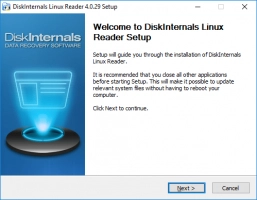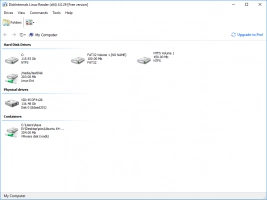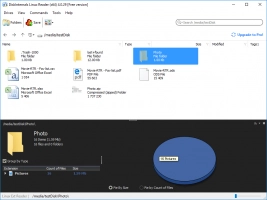How to Create a Shell Script
Here you will find out:
- what a shell script is
- how you can create a shell script
- when DiskInternals can help you
Are you ready? Let's read!
What is a shell?
A shell provides the user with various functions of the system using certain commands; that is, it allows the system to be controlled. By default, most Linux distributions use the bash shell. Its function is to recognize and read the input commands, and then call the necessary programs.
About a shell script
A script is a sequence of commands written to a special file, and the shell reads these commands from the file and interprets them. To create such a shell, you need a special program: a text editor. Fortunately, there are a lot of such programs, so you can use any of them to create a shell script.
How to create a shell script
So, you need to select the right text editor. So, you need to select the right text editor.

You need to save the script file with the file name filename.sh after writing a code.
To run the script, enter: bash filename.sh
Then you can test this command and then transfer it to the production environment. So, now you know how to create a shell script.
The structure of a shell script
Consider the first 3 lines of a script:
- The first line usually starts with #! /bin/bash - this suggests that you want to use the bash shell.
- Next up is /bin/bash. This second line is necessary to create a cleanup command, which deletes the commands that were there before. The output from the console or terminal window in which the command was executed also occurs.
- The third line is for entering the required message using a simple echo command. Sometimes you can use quotation marks; this is especially convenient and useful for complex tasks in volume programming.
When it's easy to open Linux files
If you are using a dual-boot or virtual machine, and you need to get files from Linux to Windows, the easiest way is to take advantage of DiskInternals Linux Reader. This simple and easy-to-use tool runs on Windows 7, 8, and 10. It allows you to view HFS, Ext2/3/4 and ReiserFS file systems.




The program provides you with read-only secure access to the source disk, and also bypasses file security policies; this is necessary in order to access any file on the Linux disk. In this application, reading files from all types of hard drives is available, including HDDs, SSDs, flash drives, memory cards and others. Before the export of data, it is possible to view files for free and verify their integrity. And creating a disk image with DiskInternals Linux Reader is also possible. By purchasing a license, you will also receive free software updates throughout the year and technical support at any time.
